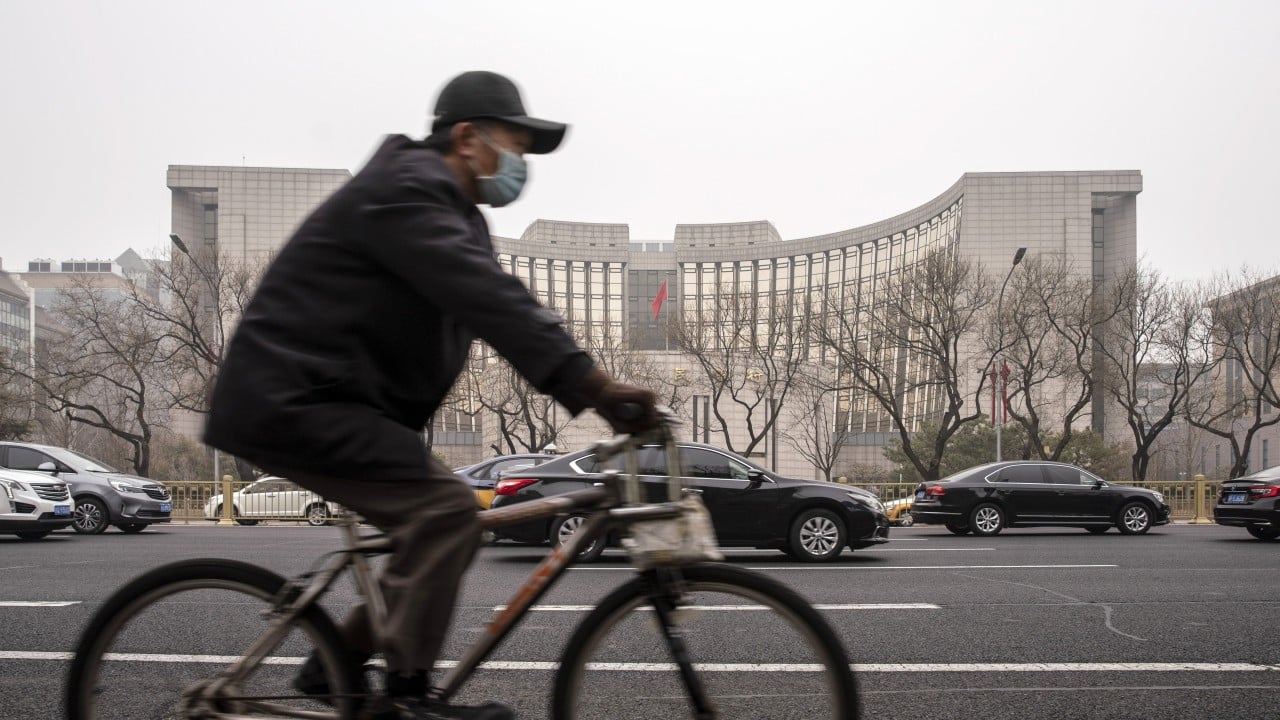China’s financial market watchdog has accused four state-backed rural banks in the eastern province of Jiangsu of manipulating market prices and transferring benefits in the secondary market for government bonds, amid a concerted effort by the central bank to cool China’s bond-market rally amid an economic slowdown.
The National Association of Financial Market Institutional Investors (NAFMII), an affiliate of the People’s Bank of China, announced the start of a self-disciplinary investigation into four rural commercial banks in the province: Jiangsu Changshu Rural Commercial Bank, Jiangsu Jiangnan Rural Commercial Bank, Jiangsu Kunshan Rural Commercial Bank, and Jiangsu Suzhou Rural Commercial Bank.
Wednesday’s announcement came as investors have been clamouring for safe-haven trades – ultra-long government bonds, in most cases – as the stock market has come under pressure amid lower-than-expected economic growth in the second quarter and a protracted crisis in the property market.
The investigations led to discoveries of government-bond-transaction violations, and some of the most serious violations have been referred to the People’s Bank of China for administrative penalties, the NAFMII said in follow-up comments on Thursday, adding that they were investigating and processing other similar cases.
The central bank certainly has a history … of using all of the tools at its disposal to try to influence market prices
The Jiangsu branch of the People’s Bank of China has instructed local rural commercial banks to be cautious about holding long-term bonds, according to Bloomberg. During a period when state-owned banks are selling off long-term bonds, these rural banks are being advised not to significantly increase their bond holdings and to manage their position risks carefully.
The PBOC has been clear this year on its intentions to clamp down on the bond rally, which has been driven by short-term factors, including speculative ones, said Thomas Mathews, head of markets for the Asia-Pacific region at Capital Economics.
“The central bank certainly has a history, more than most others, of using all of the tools at its disposal to try to influence market prices to where it would prefer them to be.
“I’d be hesitant to characterise this specific development as part of that, but the overall approach by the central bank is very clear,” which includes selling the bonds it has borrowed, regulatory tools, and some recent guidance around the duration of bond funds.
China’s bond market is grappling with the central bank’s efforts to push up long-end yields and the country’s slowing economy.
The bond rally has persisted despite warnings and actions from the regulator – the Chinese central bank said in July that it had already signed agreements with several major financial institutions, that it had hundreds of billions of yuan worth of bonds at its disposal, and that it would sell them depending on market conditions.
The yield on China’s 10-year government bonds declined by 6.2 basis points in July for a second straight monthly fall, spurred by optimism that the country’s central bank would unveil a fresh bout of monetary easing.
As of Thursday, the 10-year government bond yield was 2.1228 per cent, up 3.23 basis points from the previous trading day, while the 30-year government bond yield was 2.3903 per cent, up 3.79 basis points.
Late last month, the central bank unexpectedly lowered both the loan prime rate and the medium-term policy rate.
“The PBOC will soon start borrowing government bonds, opening the door to sales aimed at arresting the decline in long-term yields, which the central bank sees as a growing financial stability risk,” Capital Economics said last month.
“But the forces pushing down yields seem unlikely to reverse any time soon and would require substantial intervention to counteract. Without wider monetary tightening, which doesn’t appear to be on the cards, the best the PBOC can probably hope to achieve is to engineer a short-term pause to the bond rally.”


